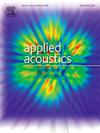非金属管道泄漏度识别的声学特征处理策略
IF 3.4
2区 物理与天体物理
Q1 ACOUSTICS
引用次数: 0
摘要
针对非金属管道泄漏程度的准确识别挑战,本研究提出了基于主成分分析(PCA)和双向长短期记忆网络(Bi-LSTM)的声学特征处理策略。利用水听器传感器采集管道不同泄漏程度产生的声压信号。从时域、谱域和波形形态三个方面提取了不同泄漏程度的声信号特征。随后,采用主成分分析法对提取的特征进行精简和降维。基于累积方差贡献率(CVCR)确定最优主成分数,消除了冗余特征,保留了主成分。此外,还设计了PCA-Bi-LSTM模型来识别管道泄漏程度。主要成分按时间顺序组织成输入Bi-LSTM的细胞。使用不同的统计特征和神经网络架构进行了比较分析,并在不同的压力和泄漏位置进行了额外的实验,以验证所提出方法的泛化性。结果表明,PCA-Bi-LSTM方法的泄漏识别准确率为98.6%,显著高于前者的91%。单向LSTM网络的准确率为5%,传统Bi-LSTM网络的准确率为93.2%。结果表明,所设计的策略有效地提高了非金属管道泄漏程度识别的准确性,并具有一定的通用性。本文章由计算机程序翻译,如有差异,请以英文原文为准。
Acoustic feature processing strategy for leak degree identification in non-metallic pipelines
In response to the challenge of accurately identifying the degree of leaks in non-metallic pipelines, this study proposes acoustic feature processing strategy based on the Principal Component Analysis (PCA) and Bidirectional Long Short-Term Memory Networks (Bi-LSTM). The hydrophone sensors are deployed to collect acoustic pressure signals generated by different degrees of pipeline leak. Acoustic signal features of varying leak degrees are extracted from the perspectives of the time domain, the spectral domain, and waveform shape. Subsequently, PCA is employed to streamline and reduce the dimensionality of the extracted features. The optimal number of principal components is ascertained based on the Cumulative Variance Contribution Rate (CVCR), which eliminates redundant features and preserves principal components. Furthermore, the PCA-Bi-LSTM model is designed to identify the degree of pipeline leak. The principal components are organized chronologically into cells for input into the Bi-LSTM. Comparative analysis is performed using different statistical features and neural network architectures, with additional experiments conducted under varying pressures and leak locations to validate the generalizability of the proposed method. The results indicate that the PCA-Bi-LSTM approach achieves a leak identification accuracy of 98.6 %, which is significantly higher than the 91. 5 % accuracy of the unidirectional LSTM network and the 93.2 % accuracy of the traditional Bi-LSTM network. The results demonstrate that the designed strategy effectively improves the accuracy of identifying the degree of non-metallic pipeline leaks and demonstrates a certain level of generalizability.
求助全文
通过发布文献求助,成功后即可免费获取论文全文。
去求助
来源期刊

Applied Acoustics
物理-声学
CiteScore
7.40
自引率
11.80%
发文量
618
审稿时长
7.5 months
期刊介绍:
Since its launch in 1968, Applied Acoustics has been publishing high quality research papers providing state-of-the-art coverage of research findings for engineers and scientists involved in applications of acoustics in the widest sense.
Applied Acoustics looks not only at recent developments in the understanding of acoustics but also at ways of exploiting that understanding. The Journal aims to encourage the exchange of practical experience through publication and in so doing creates a fund of technological information that can be used for solving related problems. The presentation of information in graphical or tabular form is especially encouraged. If a report of a mathematical development is a necessary part of a paper it is important to ensure that it is there only as an integral part of a practical solution to a problem and is supported by data. Applied Acoustics encourages the exchange of practical experience in the following ways: • Complete Papers • Short Technical Notes • Review Articles; and thereby provides a wealth of technological information that can be used to solve related problems.
Manuscripts that address all fields of applications of acoustics ranging from medicine and NDT to the environment and buildings are welcome.
 求助内容:
求助内容: 应助结果提醒方式:
应助结果提醒方式:


